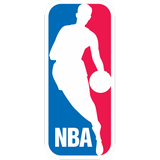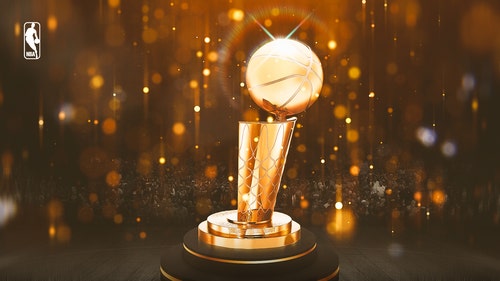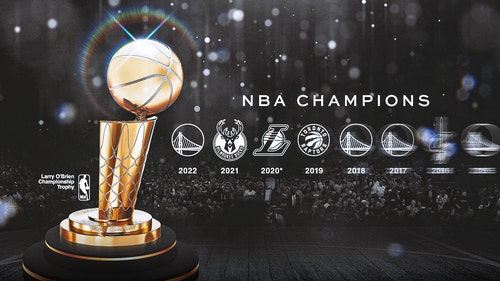
Northwest Division: 5 Burning Questions For The 2016-17 Season

DALLAS, TX – OCTOBER 11: Russell Westbrook
The Northwest Division boasts a number of teams in motion, including four young teams with tons of hope. As the season nears, what are the burning questions for each squad?
Real NBA games are only one week away. Yes teams have been puttering around the preseason, but in one week they start putting the results in the ledger. Basketball matters soon, and that’s something to be celebrated.
It also means that soon the questions swirling around each team will begin changing into answers. Some will be revealed immediately, such as whether Russell Westbrook will literally destroy opponents on his way to the rim this season. Others will unfurl more slowly as teams show their true mettle and the scales are weighed in the postseason.
The Northwest division contains five teams that are moving in various directions. The Oklahoma City Thunder are heading down after losing one of the best players in the league. How fall will the fall without Kevin Durant?
Mirroring their fall is the rise of the young teams in the Northwest. The Minnesota Timberwolves have been anointed as the next great team, the 2016 version of the 2010 Thunder. With Karl-Anthony Towns ready to leap into the All-Star conversation and Tom Thibodeau barking from the sidelines, the sky seems the limit for Minnesota and its fans.
Somewhere in the middle are Utah and Denver, two deep teams with a mix of youth and veterans ready to break back into the playoffs. The Jazz have to be prepared to pay up as multiple cornerstones approach free agency, striving for contention as they weigh the worth of their pieces. Denver may look to move its expensive veterans and pour all their resources into the youth movement.
Portland is the outlier in the Northwest, the team that is not clearly heading up or down. Will they bite the regression pill and sink back into the middle of the West? Or will their young players embrace continuity and grow into something even greater?
What is the most burning question for each squad? Beginning with the embittered Thunder, what will this new season reveal about each team?
Sep 23, 2016; Oklahoma City, OK, USA; Oklahoma City Thunder guard Victor Oladipo (5), Oklahoma City Thunder head coach Billy Donovan and Oklahoma City Thunder guard Russell Westbrook (0) pose for portraits during Oklahoma City Thunder media day at Chesapeake Energy Arena. Mandatory Credit: Mark D. Smith-USA TODAY Sports
Which Wing Player Will Step Up on the Oklahoma City Thunder?
The Oklahoma City Thunder will take a major step down this season in the wake of Kevin Durant’s departure. They effectively replaced Durant with Alex Abrines, a European shooting guard with the upside of a rotation player at best.
That isn’t to say the Thunder are bereft of talent, as the team still employs a top-7 talent in Russell Westbrook. Steven Adams is a defensive force at center, and Enes Kanter is one of the league’s most talented scorers on the block. This isn’t a situation like when LeBron James left the Cavaliers barren in his wake and waiting on draft picks to restock.
The Thunder were already thin on the wing, however, and Durant’s departure wipes out their only elite contributor. At this point, even the loss of Dion Waiters hurts, as he was at the very least worthy of a spot in the rotation.
Victor Oladipo will face the brunt of the load in replacing Durant’s place on the wing. Another former second overall pick, Oladipo has balanced flashes of skill on both ends of the court with extended stretches of mediocre play.
There is certainly hope that in a new environment, playing alongside the best driving point guard in the league, that Oladipo finds his niche and flourishes. It’s also possible he flatlines as a decent starter, with an average shot and middling defense.
The rest of the rotation features players with severe limitations, starting with probably starter Andre Roberson. In the playoffs Roberson ignited with a bouncy off-ball game, cutting to the rim and slipping through screens to crash the offensive glass. But without elite shooting at any of the other starting positions, Roberson’s outside struggles will strangle the spacing.
The aforementioned Abrines comes into the league with potential, but early returns have been inconsistent. He doesn’t have any one strength that can carry him into a long career; that will have to develop later. Anthony Morrow is a niche shooter who contributes little else, and Josh Huestis hasn’t earned the right to a regular season court.
The wild card could be Kyle Singler, acquired in the deal that sent Reggie Jackson to Detroit. Singler put up solid numbers his last season-and-a-half on the Pistons, showing himself to be a valuable rotation piece. Upon joining the Thunder his numbers and effectiveness have plummeted, and he was excised from the rotation in last season’s playoffs.
Whether it’s Singler, Roberson, or Abrines the Thunder need to find a consistent starter at the 3, especially with power forward uncertain in the wake of Serge Ibaka being dealt away. Oklahoma City can rebound from the loss of Durant, but they will need someone to fill even half of the lanky forward’s shoes.
Oct 5, 2016; Phoenix, AZ, USA; Utah Jazz guard George Hill (3) and forward Gordon Hayward (20) talk mid court during the first half of the game against the Phoenix Suns at Talking Stick Resort Arena. The Utah Jazz defeated the Phoenix Suns 104-99. Mandatory Credit: Jennifer Stewart-USA TODAY Sports
How Far Can the Utah Jazz Rise This Season?
Last season saw the Western elite beat down those teams not yet ready for primetime. Golden State and San Antonio combined for 140 wins, the largest two-team total in NBA history. Teams in New Orleans, Denver, and Utah swallowed their optimism and took another turn in the lottery.
This season no team has a brighter start envisioned than the Utah Jazz. Projections are all over the map, but all predict improvement. Will the Jazz crack the playoffs as a 45-win 7th seed? Are they a 50 win team? Can they host a playoff series?
Utah would most likely have made the playoffs if not for major injuries to Dante Exum (missed the entire season) and Rudy Gobert, who missed twenty-one games but was clearly hobbled when he returned. Despite their injuries, the Jazz finished only one game out of the playoffs.
The core of this team returns, and adds key rotation pieces in George Hill, Boris Diaw, and Joe Johnson. In addition to their on-court abilities, the combined playoff experience of the trio give this squad something it hasn’t had before.
Gordon Hayward is nominally the team’s best player, and he will miss the start to the season. If the injuries of last season come knocking again this season, the Jazz could struggle to make the ascension many are predicting.
But the reality of Utah’s roster is that they now have the depth to overcome injuries. Derrick Favors has the size to play center, and with Diaw and Johnson the Jazz have options at power forward. At point guard, their starter last season is now third, behind the young and athletic Dante Exum and veteran starter George Hill.
Every position is two or three men deep, with a mixture of experienced veterans and young rising talent. Utah can go big, small, or any number of combinations in between. With moderately better health, growth from Exum, Rodney Hood, Gobert, and Trey Lyles, and increased depth this team could make a huge leap forward.
Even a small step would mean the playoffs; a major improvement could mean a home playoff series. With their size and defensive acumen, it’s not out of the question the Jazz could give the Golden State Warriors their toughest matchup in the West. If everything breaks right, this team has the faintest of chances of winning the Conference. For a team that missed the playoffs last season, that’s a bold – but not unreasonable – statement for a squad ready to win.
Oct 12, 2016; Lincoln, NE, USA; Denver Nuggets forward Kenneth Faried (35) drives to the hoop against the Minnesota Timberwolves in the second half at Pinnacle Bank Arena. Minnesota won 105-88. Mandatory Credit: Bruce Thorson-USA TODAY Sports
Which Veterans on the Denver Nuggets Will Be Traded?
The Denver Nuggets have been without a true star since trading Carmelo Anthony to the New York Knicks, but that hasn’t stopped them from winning more games than the Knicks over that span. The glass ceiling of a starless team drove them to rebuild, but they did so in an unorthodox way.
Rather than stripping the team of its veterans, the Nuggets have kept a balance between young and old. Kenneth Faried, Danilo Gallinari, and Wilson Chandler have been a part of the team throughout that stretch. Now as the future of the team begins to grow into their roles, the Nuggets need to make long-term decisions about their veterans.
Denver’s backcourt is balanced well. Jameer Nelson serves as the veteran mentor for the team’s young guards, playing a limited role and providing coach Mike Malone with a reliable option late in games. Emmanuel Mudiay, Gary Harris, and Jamal Murray form a three-headed rotation of the future. Will Barton is a wing best suited for a 6th-man position, and could be a valuable add-in for a trade.
The frontcourt is where Denver is overstocked with bodies. Nikola Jokic is a modern big man, with range and passing ability on offense to go along with size on defense. Jusuf Nurkic is a battering ram in the post, and has the makings of an elite rim-protector. Juan Hernangomez has all of the pieces to grow into a starting stretch-4 down the road.
That leaves precious few minutes for the old hands, the veteran forwards this team has employed since Anthony’s departure. Danilo Gallinari is the best of the group, a player with the size to guard larger players and the range to hit shots from anywhere on the court. On the trade market he will most likely fetch the largest return, and with his contract up after this season the team needs to decide now whether he is in their long-term plans.
Kenneth Faried has been on the trading block for at least a year, but nothing concrete has ever emerged. A hyper-athletic big who relentlessly attacks the boards at both ends of the court, Faried has never developed a refined offensive game nor the savvy to anchor a defense. His limitations mean he can play only the 4, and in a league of versatility that depresses his trade value. Still, he is under contract for another three seasons at a bargain price compared to recent deals, and if he can overcome his stigma as a “starter” could be a valuable 3rd big for a good team.
Wilson Chandler is the most likely to be traded, and has the most variation in his potential return. He has been excellent in transition for the Nuggets, who make use of their high-elevation home court to run opposing teams ragged. Chandler is a decent player in the half-court, hitting three-pointers at an average clip. But Chandler struggles on defense, has no elite skills, and is already 29-years old. For a team in need of a veteran wing, Chandler could be a perfect fit; he also could fail to generate a market due to his lack of elite defense or shooting.
In the end, the Nuggets don’t have to trade anyone, but to fully embrace their future they will need to open up minutes somewhere in the rotation. If they can flip a couple of veterans for a young, rising wing option this team will take another step towards their ceiling.
Oct 12, 2016; Lincoln, NE, USA; Minnesota Timberwolves forward Andrew Wiggins (22) drives against Denver Nuggets guard Jameer Nelson (1) in the second half at Pinnacle Bank Arena. Minnesota won 105-88. Mandatory Credit: Bruce Thorson-USA TODAY Sports
Will Andrew Wiggins Be An All-Star Level Player For the Minnesota Timberwolves?
The Minnesota Timberwolves are the darlings of the NBA offseason. Seemingly everyone is leaping onto their bandwagon, ready to root for the next big thing as a collection of players barely old enough to purchase alcohol grows into a contender.
The faith in Karl-Anthony Towns seems warranted, as he spent his rookie season displaying skills and poise rarely found in a fifth-year player, let alone a first-year big man. Towns can score on the block, in the midrange, and beyond the arc. He hits foul shots, moves the ball, and on defense can protect both the rim and switch out onto the perimeter. Karl-Anthony Towns will soon be an All-Star.
More mystery surrounds the Timberwolves’ second star, Andrew Wiggins. He was the NBA’s Rookie of the Year in 2015, and last season put up over 20 points per game as the Timberwolves’ leading scorer. He got to the line seven times a game, 9th in the league, and 7th among players who weren’t regularly fouled intentionally.
But Wiggins scored at an inefficient clip, was a mediocre passer, and has struggled to take on the defensive mantle handed to him as he entered the league. For Wiggins to be the elite wing Minnesota needs, he needs to improve in these areas.
There is certainly reason to think that he can. Tom Thibodeau takes over at head coach, and his track record of turning athletic wings into defensive aces is stellar. Jimmy Butler is a shining example, a late pick turned into one of the league’s top wing defenders. If Wiggins can similarly grow, the Timberwolves’ ceiling increases significantly for this season and beyond.
On offense, Wiggins is a dangerous scorer and knows how to draw contact, but his shooting is still a work in progress. He shot 30 percent from beyond the arc last season, and only 45.9 percent overall. For this offense to hum he needs to increase both his percentage and his attempts (2.3 per game last season). Thibodeau’s tour around the league seems to have had an effect on him, and the Timberwolves have already launched more three-pointers this preseason than they did last year.
Andrew Wiggins has the frame of a superstar, and is set up in an environment that will support his success. If he can improve on both ends of the floor in his third season, the Timberwolves’ playoff buzz will become a reality. If his growth takes longer, then Minnesota fans could find their satisfaction delayed until next season.
October 13, 2016; Los Angeles, CA, USA; Portland Trail Blazers guard Evan Turner (1) shoots against the defense of Los Angeles Clippers guard Jamal Crawford (11)during the first half at Staples Center. Mandatory Credit: Gary A. Vasquez-USA TODAY Sports
How Does Evan Turner Fit Onto the Portland Trail Blazers
Evan Turner revived his career over the past two seasons in Boston, serving as the primary ball-handler on bench units and fighting on both ends of the court to earn playing time. When Isaiah Thomas sat, Turner was the straw that stirred the Boston drink, and it earned him a four-year, $70 million contract from the Portland Trail Blazers.
Turner’s fit on the Trail Blazers is less defined, and at first glance looks to be redundant. Turner found value in Boston due to their lack of playmakers, and coach Brad Stevens allowed the offense to run through Turner when Isaiah Thomas sat.
Off the ball, Evan Turner loses his shine. From beyond the arc Turner shot only 24 percent last season, eventually all but eliminating the outside shot from his offensive repertoire. He lacks the quickness and above-the-rim athleticism of a great cutter, and his rebounding was adequate but not excellent.
On the Trail Blazers, a number of players are talented playmakers. Damian Lillard and C.J. McCollum are both nominally point guards, and thrive with the ball in their hands. Coach Terry Stotts staggered their minutes last season, keeping one of his ball-handlers on the court nearly all 48 minutes. Mason Plumlee also showed an ability to move the ball well, often serving as an early release valve on the pick-and-roll and feeding the ball to outside shooters and cutters.
Where does Evan Turner fit in? Portland doesn’t need a wing player who can defend with limited range, and Turner isn’t even that skilled of a defender. Al-Farouq Aminu is an elite defender and developed his outside shot last season, draining 36 percent of all attempts. Is Portland hoping to effect the same change in Turner?
More likely, Portland gave Turner money because of who is he now: a talented playmaker on the wing. Golden State runs a lot of offensive actions where a big – in the past Andrew Bogut or Draymond Green – holds the ball in the high post and more talented offensive players move around the perimeter. Steph Curry is a better option with the ball in his hands than Bogut, but the offense opens up and allows Curry to find clear space on the perimeter without the ball.
Stotts and the Portland offense may be planning to add similar actions to their playbook, spinning McCollum and Lillard around the perimeter while Turner handles inside the arc. With Aminu spotting up in the corner and the team’s center of choice setting off-ball screens, the Trail Blazers could open up another chapter of offensive options.
Evan Turner made a lot of money this summer, money Portland could probably have spent elsewhere. If Turner turns back into a pumpkin outside of Boston, then the Trail Blazers will be in a tough position after spending over the cap to re-sign and extend their rotation. If Turner clicks, then a dangerous offense just added yet another level of excellence.
More from Hoops Habit
This article originally appeared on









